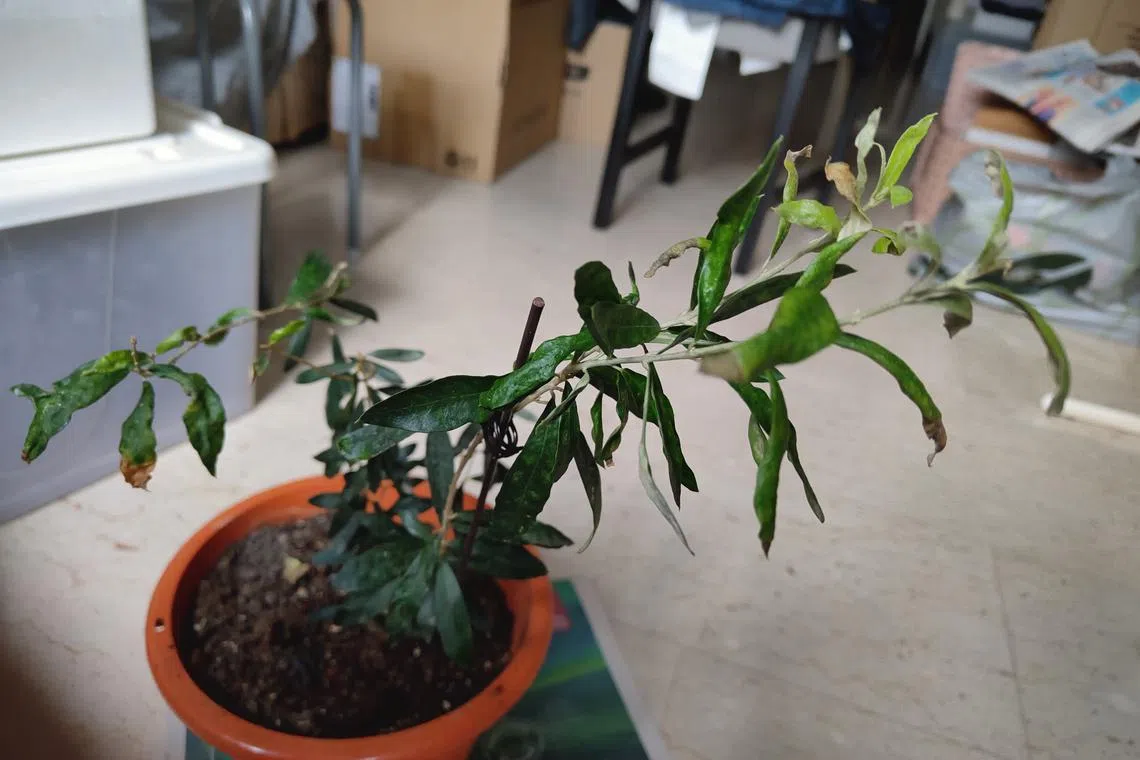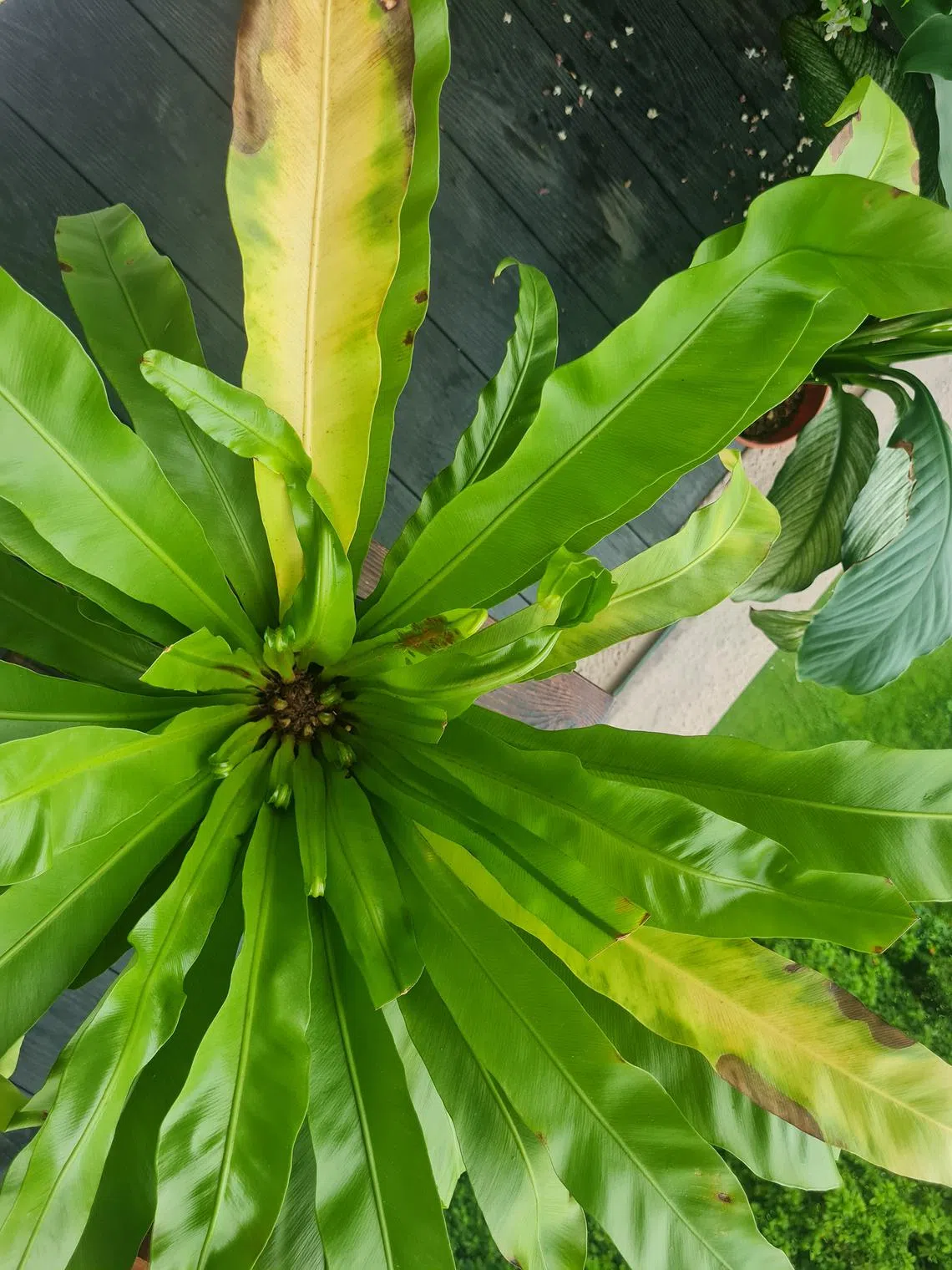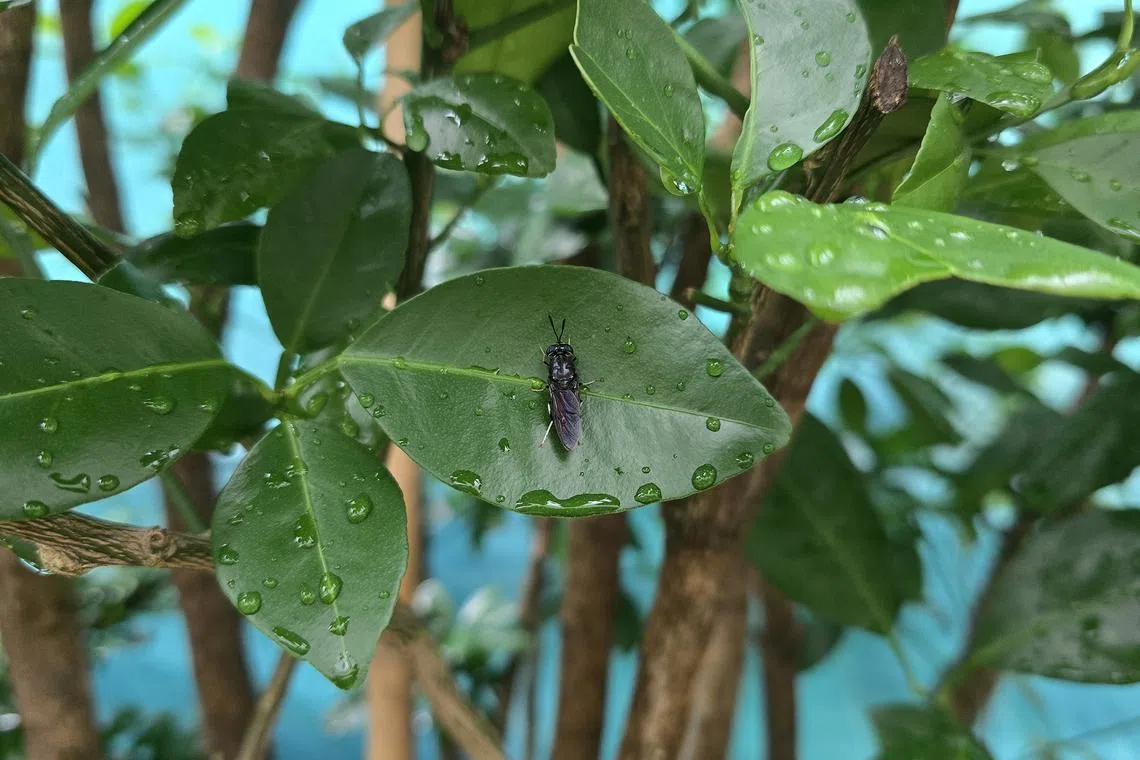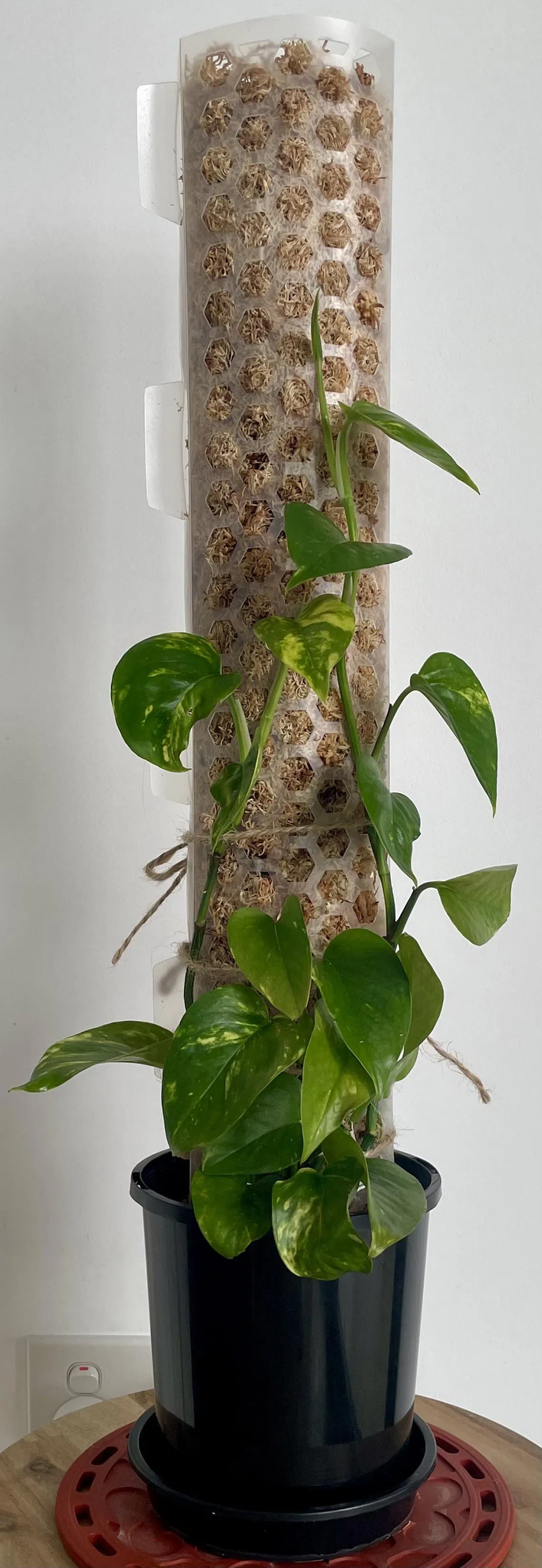Root Awakening: Grow olive plant under direct sunlight
Sign up now: Get ST's newsletters delivered to your inbox

The olive plant is not an indoor plant.
PHOTO: DAVE LIM
Wilson Wong
Follow topic:
Protect plant from excessive moisture
I bought this Japanese olive plant from a nursery three years ago. It appears to have developed an infestation recently. I sprayed neem oil, but it had no effect.
Dave Lim
Your plant may be suffering from a number of issues.
First, it needs at least six hours a day of direct sunlight. It is not an indoor plant. The lack of light can cause the plant to produce soft, elongated growth that is prone to pest attacks.
Second, the soil needs to be a porous mix that dries out more easily, so the plant does not develop wet feet. Carefully remove some soil without disturbing the plant’s roots, and add gritty, coarse components like pumice and expanded clay pellets to help with drainage.
You should protect the plant from excessive rain by growing it under a clear shelter, and water only after the root zone has dried out slightly.
Avoid over-feeding the plant and use slow-release pellets. Excessive salt build-up in the root zone can cause the tips of leaves to burn.
Give fern more light

Low light levels will result in soft, floppy leaves.
PHOTO: NANCY LEE
My fern’s leaves are yellowing and turning brown. It grows indoors, gets occasional filtered sunlight and is watered twice a week.
Nancy Lee
Your Bird’s Nest Fern (Asplenium nidus) is a native plant of Singapore.
Ferns should not be grown in deep shade. Give your plant at least six hours a day of filtered sunlight. This will toughen the leaves so they are less prone to injury and infections. Low light levels will result in soft and floppy leaves.
Insect could be the Black Soldier Fly

This insect is harmless and its larvae are used to compost waste.
PHOTO: ADRIAN LING
What is this insect on my lime plant?
Adrian Ling
The insect could be the Black Soldier Fly. It is harmless and is commonly bred in Singapore, as its larvae are used to compost food and plant waste. The larvae are also used to feed livestock, as they have high protein content.
Pruning may encourage production of side branches

Planting more cuttings will achieve a bushier look.
PHOTO: SAM YEO
My pothos has been growing taller on its sphagnum moss pole. How can I encourage bushier growth? Also, I think there is algae growing inside the moss. Will this harm the plant?
Sam Yeo
The easiest way is to plant more cuttings to achieve a bushier look.
Although pruning may encourage the production of side shoots, plants may produce just one new stem to replace the one cut, depending on the growing conditions as well as age and vigour of your plant.
Also, it is not advisable to crowd the moss pole. As your plant grows larger, it will produce bigger leaves that can block light from reaching other parts of the plant.
Algae is generally harmless. Once the plant has grown to cover the pole, thus reducing the moss’ exposure to light, the algae should disappear.
Mesua ferrea produces white flowers
There is a plant with large flowers outside my neighbour’s house. I think it could be Indian Ironwood. How do I identify it?
Sally Ong
The tree may be the Ceylon Ironwood (Mesua ferrea), which is planted in local parks and gardens.
It is a slow-growing tree with a distinctive canopy shape, and yields a heavy timber. Its flowers are white with a yellow centre, and its new leaves are red.
You can search online for the plant’s botanical name and compare the image results with your neighbour’s plant.
Answers by Dr Wilson Wong, an NParks-certified practising horticulturist and parks manager. He is the founder of Green Culture Singapore and an adjunct assistant professor (Food Science & Technology) at the National University of Singapore.
Have a gardening query? E-mail it with clear, high-resolution pictures of at least 1MB, if any, and your full name to . We reserve the right to edit and reject questions.

